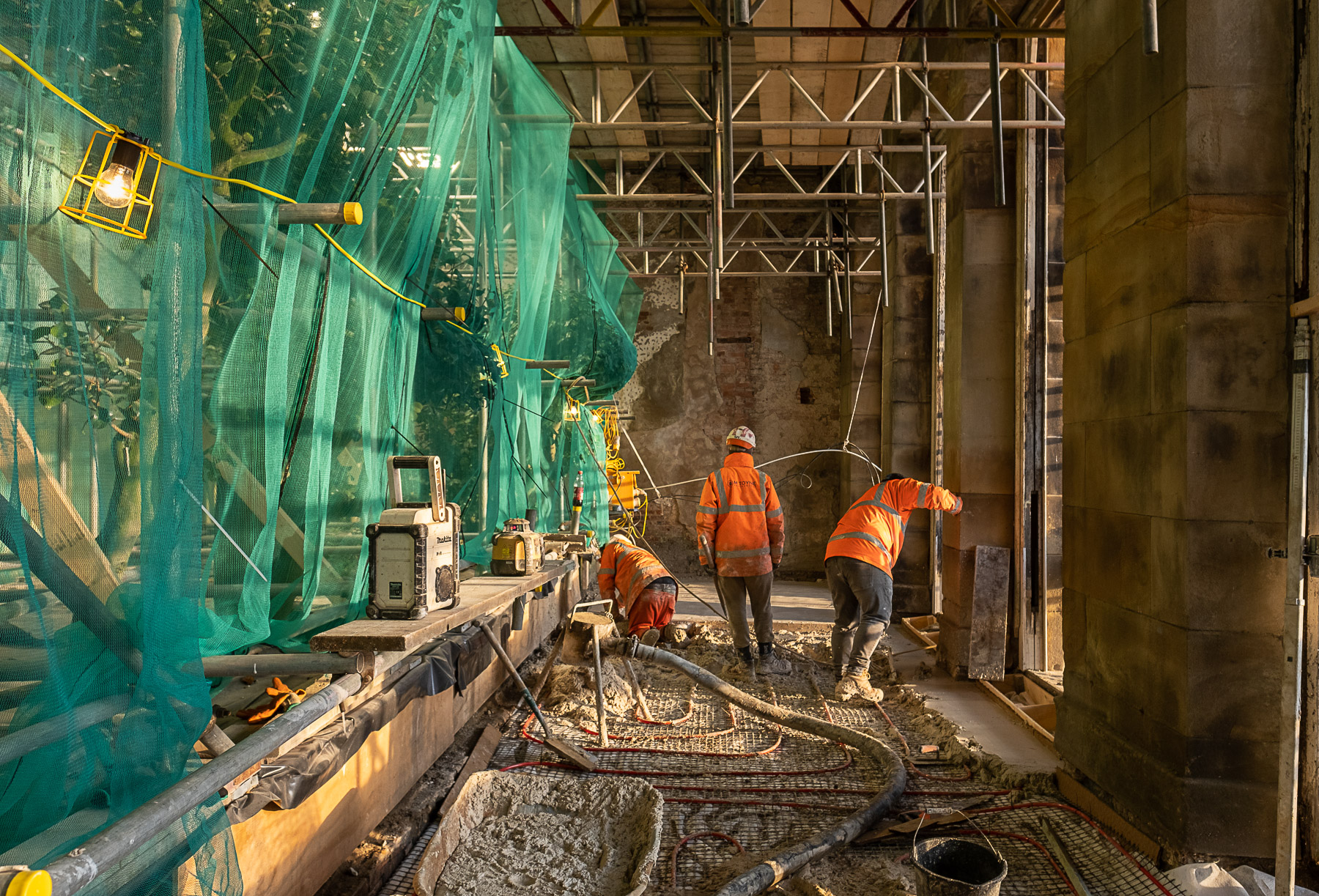
A lost collection of rare and historic camellias at Rotherham’s Wentworth Woodhouse are being cosseted through a major restoration of the building which has been their home for 200 years.
The collection includes some of the earliest camellias brought into the country in the early 1800s.
Camellia were much-prized in Georgian Britain and the Camellia House at the western edge of the Grade I listed stately home’s gardens was built in 1812 to show off the 2nd Marquess of Rockingham’s collection.
But Wentworth Woodhouse fell into decline from the late 1900s and when the Preservation Trust took over the mansion and buildings in its 82-acre grounds in 2017, the ruined and roofless Grade II* Listed Camellia House was on the Heritage At Risk Register.
However, open to the Yorkshire elements, the long-forgotten camellias had flourished.
The Trust’s Head Gardener Scott Jamieson found out their rarity by calling in the International Camellia Society and Chiswick House in London, which has its own internationally-renowned collection of camellias from the early 1800s.
A number of the 19 plants at Wentworth Woodhouse have been identified as dating back to the 1820s-30s.
Protecting the camellias is vital during the £5m. transformation of the Camellia House, which includes a 1730s structure known as Lady Rockingham’s Tearoom, into a tea house and events space which will create up to 22 jobs.
Before structural work began in September, the camellia beds were encased in timber frames and covered with thick plastic sheeting to prevent lime plaster dust and debris from contaminating soil.
A crash deck built at roof level is preventing debris falling onto the plants and netting provides further protection.
Ten foil-lined light tunnels allow natural light to reach the plants but as building work progresses and winter nights have set in, a British horticultural lighting manufacturer has come to the rescue, gifting £5,000 of professional-grade ultra-violet lighting systems.
Kent-based Lumatek is a world-leading designer and manufacturer of professional horticultural lighting. Launched in 2004, its products are sold to horticultural, hydroponics, aquatic, medical cannabis and industrial specialists throughout Europe and beyond.
CO-CEO Natalya Gray said: “We were delighted to play part in the protection of the rare and historically important camellias during Wentworth Woodhouse’s Camellia house project.
“It is a perfect fit for Lumatek – our company ethos is helping growers grow and we believe all businesses must share and care when they are called to. ”
Specialist conservation architects Donald Insall Associates and York-based construction company William Birch & Sons Ltd are carrying out the Camellia House transformation, which is expected to open in summer 2023.
It is a complex task. The building, which has no water or electricity supply, leans forward 20cms and has settled by around 20cms at one end.
Extensive damage has been caused by rain and invasive weeds. The interior brickwork and roof timbers were found to be in a much worse state than originally thought.
In February a new glass roof will be winched into place over the camellia beds and the area where visitors will take tea.
A building to service kitchens has now been built, along with a Changing Places toilet, which will be equipped with hoists and adult changing benches to ensure Wentworth Woodhouse is more accessible for severely disabled people.
Sarah McLeod, CEO of the Preservation Trust commented: “The transformation of the Camellia House is well underway and throughout the process, great attention is being paid to protecting our precious camellias.
“We are extremely grateful to LUMATEK for generously donating the specialist lighting needed to keep the camellias healthy over winter. It is wonderful; when businesses step in to help us and as a charitable trust with limited funds, we are always very keen to hear from others who can give their support and professional guidance.”
The Trust’s Head Gardener is monitoring the camellias daily and carrying out a programme of feeding and propagation to help the camellias begin their blooming season from March onwards.